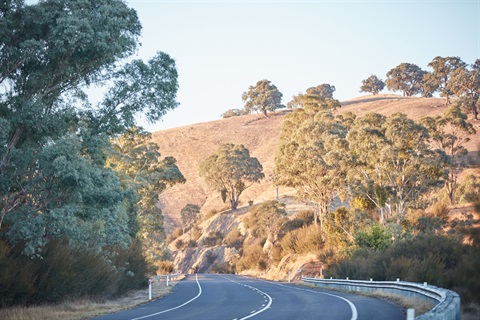Results at a glance:
■ A dry start to the 2022 season has not dented SA farmer confidence, which remains stable
■ The majority of the state’s farmers are expecting business conditions to improve or stay the same
■ Rising commodity prices are the major cause for optimism
■ Rising input prices are a concern across all sectors
A dry start to the 2022 cropping season has done little to impact confidence in the South Australia’s agricultural sector, with the majority of the state’s farmers expecting agribusiness conditions to improve or remain stable in coming months.
The latest Rabobank Rural Confidence Survey, released today, found South Australian farmer confidence has held firm in the latest quarter, with 23 per cent of the state’s agricultural producers forecasting business conditions will improve in the coming 12 months (compared with 25 per cent with that view in the previous survey), while the number with a pessimistic outlook declined to 13 per cent (from 20 per cent last quarter). This saw the state’s overall net confidence indicator edge slightly upward.
And the majority (61 per cent) are predicting stable business conditions in the year ahead, with little change expected.
High commodity prices are the chief cause for optimism among SA farmers with a bullish outlook, while those with a negative view overwhelmingly cited input prices as the primary reason for their concern.
This quarter, participants were specifically asked their views about the impacts of the war in Ukraine on agribusiness, with 55 per cent of SA farmers believing the conflict would have a negative impact on their farming businesses. Of those, 79 per cent said that would be in the form of increased costs for fertiliser, freight and other inputs, while 30 per cent also cited fuel prices.
A total of 23 per cent, however, believed there would be some positive market impacts, primarily in maintaining high commodity prices and in increasing demand for agricultural produce, due to Black Sea supply disruptions.
Rabobank regional manager for South Australia Roger Matthews said typically in a La Nina year, South Australian farmers would expect to have seen more summer rain.
“The rain we received during summer fell mainly in the pastoral areas and on the Eyre Peninsula,” he said, while the Yorke Peninsula, the mid north, the Mallee and south east of the state have all experienced quite a dry summer and autumn.
“Up until the rain that fell in late May, the rainfall in South Australia has been patchy so far this year,” Mr Matthews said, “with many grain growers planting into a dry seed bed.”
The survey, completed last month, found grain growers, though, to be the most optimistic sector in the state – with their confidence largely driven by rising commodity prices.
Rising input costs – for fertiliser and fuel – were cited as their main concern.
Sentiment within the state’s beef sector was found to be a “mixed bag” – with almost equal numbers of producers expecting the agricultural economy to improve, stay the same and worsen.
“The good rainfall received in the north of the state can underpin beef production for up to two years rather than just a season,” Mr Matthews said. “Combine a good season with sustained strong cattle prices and there is definitely cause for optimism among beef producers.”
He said the animal protein sector was strong “across the board” with 10 per cent of South Australian sheep producers expecting the agricultural economy to improve and 71 per cent expecting agribusiness conditions to remain stable.
Overall, the latest survey found 37 per cent of South Australian farmers were expecting their incomes to increase in the coming 12 months and 45 per cent to have similar returns to the previous year. A total of 14 per cent were predicting a decline in incomes.
Investment intentions also remained stable, with 28 per cent of the state’s agricultural producers planning to spend more on their farm businesses in the coming 12 months and 70 per cent to maintain current investment levels. Just two per cent were planning to decrease investment.
Investment was primarily planned to go into on-farm infrastructure (including upgrading fences, yards and silos) new plant and machinery and increasing livestock numbers, as well as adopting new technologies.
Mr Matthews said due to ongoing global supply chain issues and delays, new machinery and equipment is becoming increasingly difficult for farmers to source.
“We are seeing increased demand for second-hand equipment and machinery. Sometimes it is more expensive to buy second-hand equipment than new equipment because it is available and the new equipment is not,” he said.
The supply chain issues would also be impacting on plans to upgrade on-farm infrastructure, such as fencing, yards and silos, Mr Matthews said. The survey showed a smaller percentage of SA farmers this quarter were planning to invest in on-farm infrastructure – 53 per cent – compared with 73 per cent last quarter.
Appetite for property purchase to expand farming operations was also shown to have eased – nominated by 11 per cent of those planning to increase their investment spending this quarter, compared with 30 per cent three months ago.
A comprehensive monitor of outlook and sentiment in Australian rural industries, the Rabobank Rural Confidence Survey questions an average of 1000 primary producers across a wide range of commodities and geographical areas throughout Australia on a quarterly basis.
The most robust study of its type in Australia, the Rabobank Rural Confidence Survey has been conducted since 2000 by an independent research organisation. The next results are scheduled for release in September 2022.








